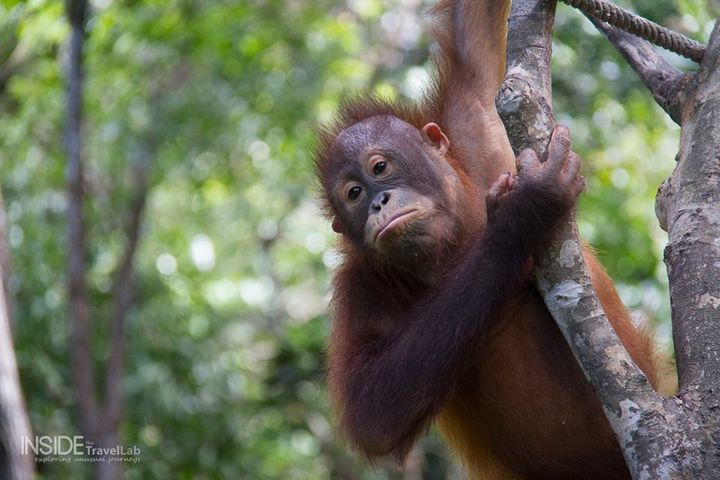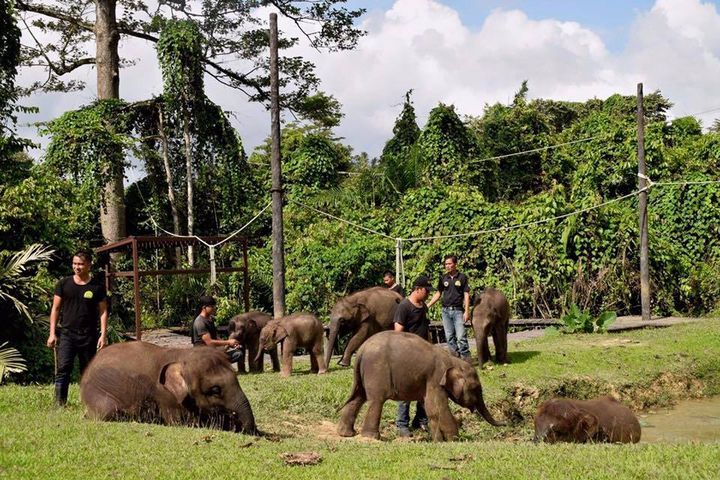We’re almost at the end of 2016 and it has been a year of constant bad news for wildlife globally. Sure, there was some good news about panda populations in China recovering but who else would have money like they throw at saving pandas?
As an optimist, I keep thinking that we’re due for some good news. We’re so advanced as a global society that surely some of us must know the consequences of what we’ve done and what we must do to fix the problems.
Imagine a tropical rain-forest where big apes swing in tree canopies while Asian elephants, Clouded leopards and pangolins roam freely in the undergrowth. This can become a reality in Sabah, north Borneo where the biggest question will be if there is enough global interest in saving tropical rain-forests.
Sustainable Development in Sabah
Sabah is one of the thirteen states that make up Malaysia. Despite its smallish size compared to its sister state Sarawak and Indonesia owned provinces of Kalimantan, it is home to the last remaining populations of forest elephants in Borneo. It is also the biggest producer of palm oil by land area, if the state was to be considered as a country. Since its early days as British colony, the natural resources of Sabah have been exploited to feed industrialized countries needs for timber, cocoa and tea and other commodities. In more recent times, some of the timber and cocoa plantations have given way to produce a higher demand product, palm oil.
The global struggle for robust economies has not spared Sabah as it continues to look for a balance between conservation and development. With palm oil as one of its biggest exports, one of its key goals is to produce palm oil sustainably.
What would Sabah’s Sustainable Palm Oil Look Like?
The only comparison one can make is to the Roundtable on Sustainable Palm Oil (RSPO ) which is well known. The big difference would be that while the RSPO seeks to certify individual member plantations which may be as big as 50,000 hectares, a plan to produce palm oil sustainably in Sabah would involve an area that’s over 7,000,000 hectares in size.
One would think that with such a massive land area that the challenges to producing anything sustainably would be bigger but that’s opposite the truth. The bigger the area, the easier it is to plan for sustainable development. Reports by the IUCN in 2016 have said the survival of key species like orangutans will need large landscapes. The land mass available to develop sustainable palm oil in Sabah is what’s needed to ensure that big mammals like the orangutans and elephants not only survive, but thrive.

Habitat or forest fragmentation is a big problem for wildlife conservation in Sabah as this report by the Sabah Wildlife Department shows. The Lower Kinabatangan area remains a biodiversity hot-spot and a densely populated area at the same time. An active situation in Sukau town represents the hardest challenge for Sabah as it strives to balance conservation and development. Solutions exist in creating flyover bridges for humans or alternately, flyover bridges for wildlife but either solution is more expensive than building a simple road. A biodiversity levy on palm oil exported from Sabah would create a conservation fund that could be used to mitigate problems like this.
A Biodiversity Tax on Palm Oil To Create Sabah Sustainable Palm Oil
Convincing Sabah’s palm oil exporters to accept a Sabah tax for biodiversity will be a challenge. While the Malaysian Palm Oil Council and individual companies including Sime Darby have ongoing funds for conservation in Sabah, these are voluntary whereas a tax would require a mandatory charge for every ton exported.
The question then is not so much whether the palm oil industry in Sabah will support a biodiversity levy but whether there will be any global demand for Sabah’s sustainable palm oil. An extraordinary tax on palm oil to protect biodiversity is not a new idea. The French government tried to impose it on their imports but failed as it was considered discriminatory and in violation of trade agreements. After all, palm oil is only one of several vegetable oils grown globally whose marketplace success is decided not by conservation agendas but by competing oils including soy and canola.
As it is, 30% of Sabah’s palm oil is already certified by the RSPO. Some growers have confirmed good sell through of certified product but others have struggled to sell any of it. This unfortunate fact is reflected in the sale of certified palm oil globally where supply continues to exceeds demand.
One argument I have for the industry is that Sabah needs to maintain its reputation. Sustainability in Sabah has a solid foundation which was created long before it became a hot topic. Forest management under the Sabah Forestry Department has had its hiccups but it has managed to double its Totally Protected Forests since 2003 to 1.8 million hectares today. Protected areas like the Maliau Basin or Danum Vallley are a favored destination for tourists looking to experience primordial Borneo but these disconnected areas do not guarantee that wildlife populations will thrive.
The two key things that need to happen in Sabah is reconnecting fragmented habitats and protecting them from illegal activities. The threats against wildlife in Sabah is reflected in this Mongabay article which identified hunting as the biggest threat to South East Asian biodiversity. It would be tragic if all the forests were saved only to be devoid of wildlife.
The task of protecting its wildlife depends on the Sabah Wildlife Department which is inadequately funded to do a proper job. Here again, a biodiversity fund would go a long way towards hiring more rangers needed to protect Sabah’s wildlife.

There is no doubt that these ancient forests in Sabah would serve well as a carbon offset for California or ICAO but the palm oil industry AND their buyers have an obligation to do their part.
Sabah has the capacity to meet the commitment of any brand to sustainable palm oil. Traceability of palm oil sources would be a non issue as the massive downstream processing facilities at the Lahad Datu POIC would serve to simplify the confuscated supply chain of global palm oil. Where else can brands like Starbucks, Pepsico or Unilever point to and tell their customers with confidence that they had a hand in saving orangutans and elephants for perpetuity?
The orangutans and elephants in Sabah are in no danger of extinction but the mere survival of species is a low goal. We have to aim higher for wildlife in Sabah.
